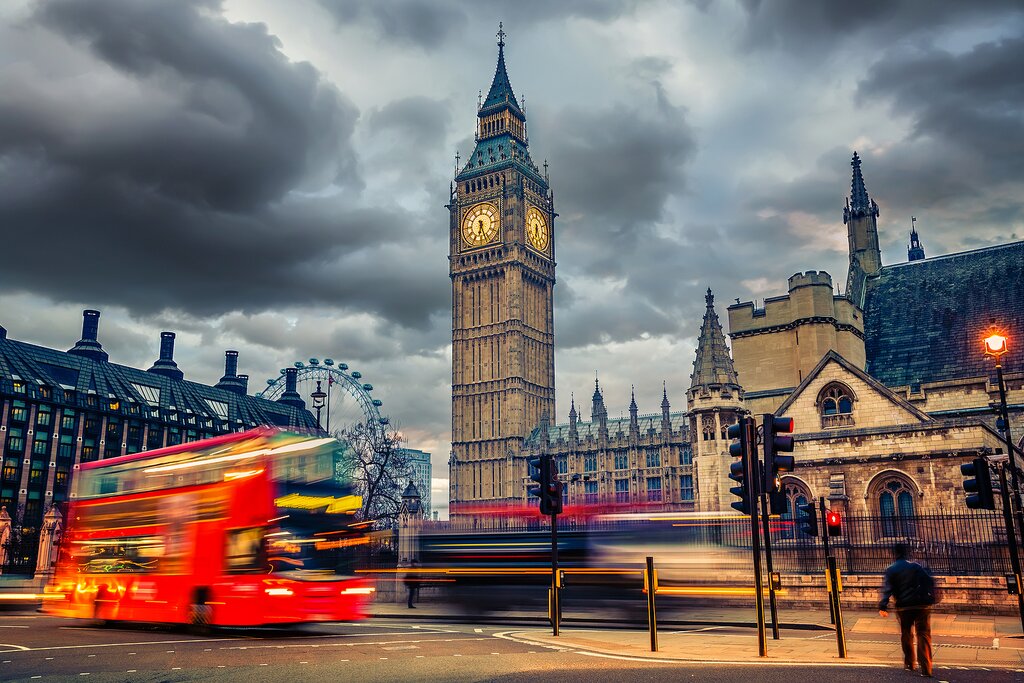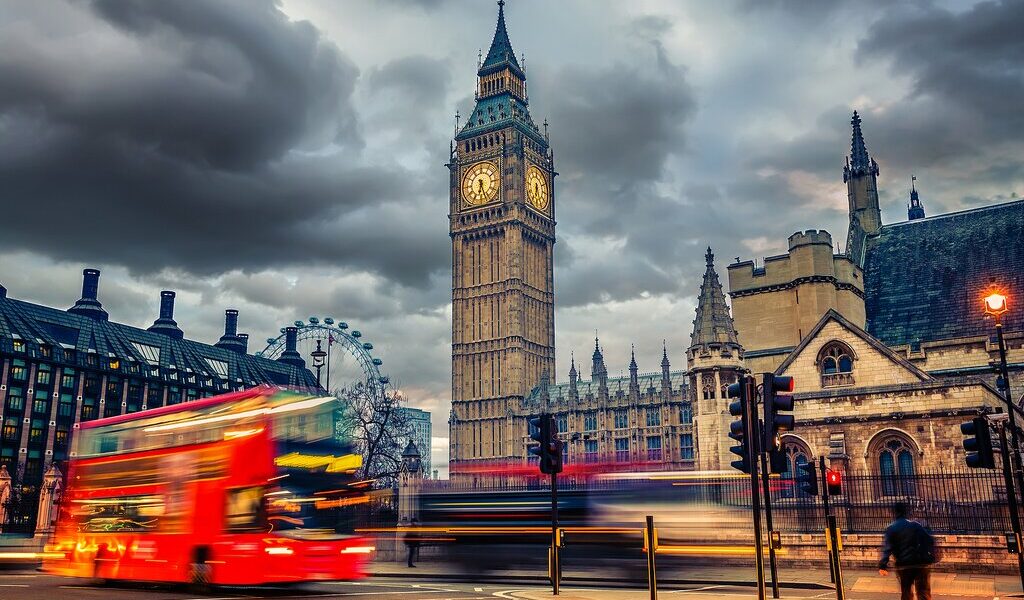
February is a great time to take advantage of low rates and fewer crowds in England. Though it’s winter, there are many options to choose from, with lesser-known cities, romantic drives in the countryside, and outdoor adventures on the southern coast (like cliff walking and surfing). Or, stick around London and see the famous sites—plus, there’s a month-long orchid show at the Royal Botanic Gardens.
England in February: A Comprehensive Guide
## Weather in England During February
February in England finds the country nestled deep within its winter season. During this month, the days are often characterized as cold, frequently gray, and damp. However, it’s worth noting that England experiences a more moderate winter compared to many other countries located in northern Europe. To illustrate, in the bustling nation’s capital, **London**, average temperatures typically reach daily highs of around 48°F (9°C). Furthermore, the lows in London generally remain above freezing, hovering around 41°F (5°C). This relatively mild winter climate makes England a potentially appealing destination for those seeking a less extreme winter experience.
Keep in mind that temperatures can vary slightly depending on your specific destination within England. For instance, cities positioned further north, such as **Manchester** and **Newcastle**, which are located closer to the border of Scotland, are likely to experience temperatures that are a few degrees colder than those found in the south. Conversely, the southwestern tip of England, particularly along the **Cornwall Peninsula**, tends to be milder compared to the rest of the country. This is due to its geographic proximity to the **Gulf Stream**, a warm ocean current originating in the tropics that significantly influences the climate of the region.
Another factor to consider when planning a trip to England in February is the length of daylight hours. While the days are relatively short, the good news is that they are gradually lengthening throughout the month, adding a little bit more light with each passing day. By the end of February, you can expect to have close to eleven hours between sunrise and sunset, providing ample time for sightseeing and outdoor activities.
Predicting the weather in England can be challenging, as it’s known for its unpredictable nature. Conditions can change quite rapidly, especially when factoring in the region’s distinct wind patterns. Therefore, it’s always a wise idea to pack clothing in layers, allowing you to adjust to fluctuating temperatures throughout the day. Essential items to include in your luggage are a warm, thick winter jacket, gloves, a hat, and a reliable umbrella, often referred to as a “brolly” in British English. While snowfall is less common than rain, you might even be fortunate enough to witness a picturesque snowfall during your visit, adding a touch of magic to the English landscape.
## Crowds and Costs in February
February is considered the low season for tourism in England, which translates to several advantages for travelers. One of the primary benefits of visiting during this month is the opportunity to take advantage of off-peak pricing for flights, car rentals, and accommodations. These lower prices can significantly reduce the overall cost of your trip, making it a more budget-friendly time to explore England.
Another significant perk of traveling to England in February is the reduced number of tourists at popular attractions. You’ll likely encounter fewer crowds at museums, popular landmarks, and during guided tours compared to the busier months of the year. This allows you to experience these attractions in a more relaxed and intimate setting, without the need to navigate through throngs of people.
If you plan to venture into the English countryside, it’s important to note that some hotels and attractions might be closed for the winter season. Therefore, it’s advisable to check the opening hours and availability of specific places you intend to visit in advance.
Additionally, keep an eye out for the week of the UK school system’s half-term break. During this period, there is typically an increase in both crowds and prices, as families take advantage of the school holiday to travel. If possible, consider planning your trip to avoid this particular week to ensure a more relaxed and affordable experience.
## Where to Go in England
England, as a vital part of the United Kingdom, attracts millions of visitors from around the world each year. Many international travelers arrive through one of Europe’s busiest airports: **Heathrow**, located near **London**. Whether you are a first-time visitor or a seasoned traveler to England, a trip is not truly complete without dedicating some time to exploring the vibrant and cosmopolitan city of London, situated on the banks of the historic **Thames River**.
Consider spending several days or even longer immersing yourself in the diverse offerings of London’s 32 boroughs. Navigating the city is made easy by its extensive public transportation system, most notably the London Underground, affectionately known as the “Tube,” and the iconic red double-decker buses. The latter offers a unique perspective of London street life, especially from the coveted front seat on the top deck.
However, England has much more to offer than just London, and deciding where else to explore, particularly in the winter months, can be a delightful challenge. You might consider spending a few nights discovering one or more of the northern cities, such as **Manchester**, **Birmingham**, **Leeds**, and **York**, each with its distinct character and attractions. Alternatively, you could establish London as your home base and then embark on day trips to charming towns like **Bath**, **Oxford**, or **Cambridge**. In these historic university towns, you can partake in guided tours and enjoy a leisurely lunch before returning to London in time for dinner. Conveniently, train journeys to all three of these destinations from London are typically less than 90 minutes each way.
For those with more time to spare and a desire for greater flexibility, renting a car opens up a world of possibilities for exploring the English countryside. February, being a quieter month, allows you to enjoy peaceful country roads at your own pace. For example, the **Cotswolds**, a designated Area of Outstanding Natural Beauty, is captivating in any season. This extensive region, encompassing several counties in England, is characterized by its rolling hills, picturesque thatched cottages, and some of the country’s most charming country homes, castles, and palaces, including the birthplace of Winston Churchill.
Another option is to travel southwest to **Dorset**, situated along the English Channel. Here, you can experience the **Jurassic Coast**, a UNESCO World Heritage Site. This remarkable 95-mile (153 km) stretch of coastline showcases unique rock formations and an abundance of fossils, offering a glimpse into the earth’s distant past. Further southwest lies the rugged county of **Cornwall**, renowned as the UK’s surfing capital. Cornwall boasts the longest stretch of coastline in the country, with countless beaches, dramatic cliff walks, and impressive winter swells that attract experienced surfers from around the globe.
## What to Do in England in February
Given the unpredictable nature of the English winter weather, February is an ideal time to focus on exploring England’s vibrant cities. You can dedicate your time to discovering up-and-coming central areas while taking advantage of the numerous cultural activities and the quintessential British tradition of afternoon tea.
**Manchester** stands out as a city with a wealth of mostly free museums, including an art gallery, a science museum, and even the **National Football Museum**. For passionate sports fans, purchasing tickets to a **Manchester United** match at the iconic **Old Trafford** stadium is a must, with matches typically taking place in February.
Sharing a similar size and often referred to as England’s second cities, **Birmingham** exudes a young and creative atmosphere. Remarkably, Birmingham boasts more canals than Venice, making it a unique destination. Bundle up warmly and enjoy a leisurely walk or bike ride along the waterways, followed by a visit to the city’s impressive culinary scene, which includes several Michelin-starred restaurants. A worthwhile day trip from Birmingham is **Stratford-upon-Avon**, the renowned 16th-century home of William Shakespeare. Here, you can dedicate a day to touring the various houses and the school associated with the celebrated playwright and his wife, Anne Hathaway.
Despite the cold weather, active travelers can still enjoy the natural beauty of England. Numerous coastal walks and country paths offer opportunities for outdoor adventures. One of the most notable long-distance trails is the 102-mile (164-km) **Cotswold Way**, featuring dramatic hills perfect for walking and even horseback riding, weather permitting. Alternatively, consider hiking a portion of the **South West Coast Path**, one of England’s most famous trails, offering spectacular coastal scenery dotted with picturesque beaches.
For a respite from the cold, indoor gardens provide a welcome escape. If you find yourself in **Cornwall**, a visit to the **Eden Project** is highly recommended. This is one of the world’s largest greenhouses, featuring a variety of “biomes” dedicated to different geographical regions, including North America, Chile, and the Mediterranean. In London, you can take a train to Richmond’s **Royal Botanical Gardens**, also known as Kew Gardens, to witness the vibrant display of blooms at the annual orchid festival, which takes place each February.
## Events in February in England
Here are some of the notable events that typically occur in England during the month of February:
**Orchid Festival**, **Richmond**. This annual festival, dedicated entirely to the beauty and diversity of orchids, is held at Kew Garden’s Princess of Wales Conservatory, located just outside of London. The festival typically runs from early February through early March.
**Chinese New Year, London** and **Manchester**. Depending on the lunar calendar, the Chinese New Year may fall in late January or early February. Keep an eye out for festive parades and lively street fairs in England’s two main Chinatown areas, located in London and Manchester.
**Shrove Tuesday**, **nationwide**. Also known as Pancake Day, Shrove Tuesday is celebrated across the country with a variety of unique events. It marks the last day before Lent begins in the Christian calendar.
**BookFest**, **Portsmouth**. This annual festival, held on the south coast, features readings from authors, book-related events, and celebrations for literature enthusiasts.
**JORVIK Viking Festival**, **York**. The historic city of York, located in the northeast of England, hosts the largest Viking festival in Europe. The festival encompasses a wide range of events, including historical discussions, reenactments, and cultural exhibitions, offering a fascinating glimpse into Viking history and heritage.
B-745

